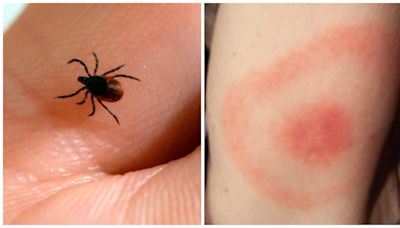Search results
Jun 16, 2023 · Symptoms. Complications. When to See a Doctor. Diagnosis. Lyme disease is a bacterial infection spread by black-legged ticks, commonly known as deer ticks. It is the most frequently seen vector-borne disease in the United States. Symptoms of Lyme disease vary based on the severity of the case.
Early symptoms can include achiness, chills, fever, sweats, fatigue, malaise, headache, stiff neck, muscle soreness, joint pain, swollen lymph nodes, and sore throat. The combination of the skin lesion and flu-like symptoms are the primary manifestations of acute stage Lyme disease, although the rash and flu-like symptoms are not always present.
Aug 16, 2022 · What are the symptoms of Lyme disease? Signs and symptoms of early Lyme disease typically include: A reddish ras h or skin lesion known as erythema migraines (EM). The rash starts as a small red spot at the site of the tick bite anywhere from one week after to four weeks after the bite.
Jan 19, 2022 · Lyme disease is caused by the bacterium Borrelia burgdorferi and rarely, Borrelia mayonii. It is transmitted to humans through the bite of infected blacklegged ticks. Typical symptoms include fever, headache, fatigue, and a characteristic skin rash called erythema migrans.
Feb 10, 2023 · If you live where Lyme disease is common, the rash might be enough for a diagnosis. A diagnosis usually depends on the following: A review of all signs and symptoms. A history of known or possible exposure to ticks. Blood tests to find disease-fighting antibodies to the bacteria.
Sep 13, 2023 · The first sign is usually a bull's-eye rash. You might also have flu-like feelings of fatigue, headache, fever, sore throat, chills, or body aches. If the infection hasn't been eradicated...
Check Your Symptoms. What is Lyme disease? Image of B. burgdorferi under atomic force microscope. Courtesy of Dr. Eva Sapi. Lyme disease is caused by a spirochete—a corkscrew-shaped bacterium called Borrelia burgdorferi. Lyme is called “The Great Imitator,” because its symptoms mimic many other diseases.



